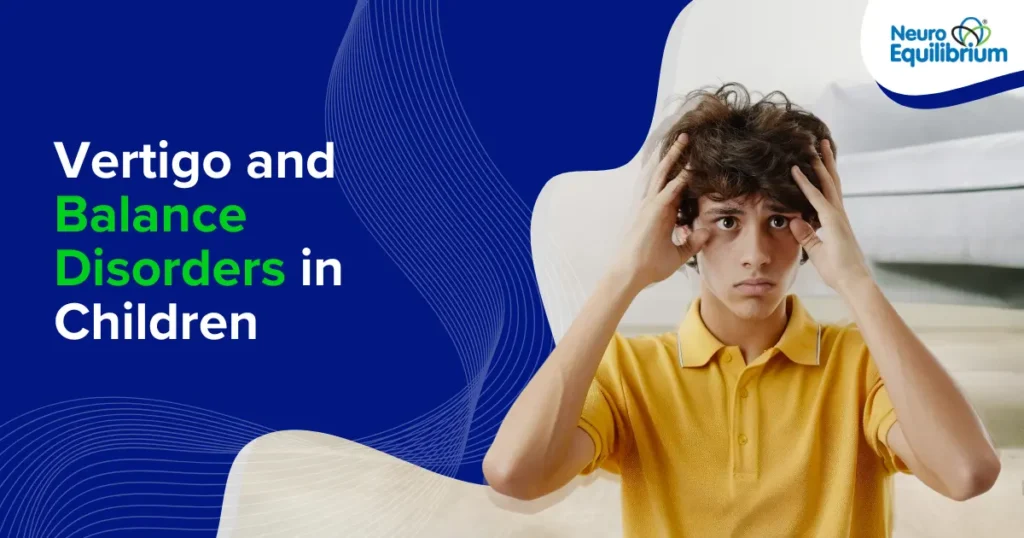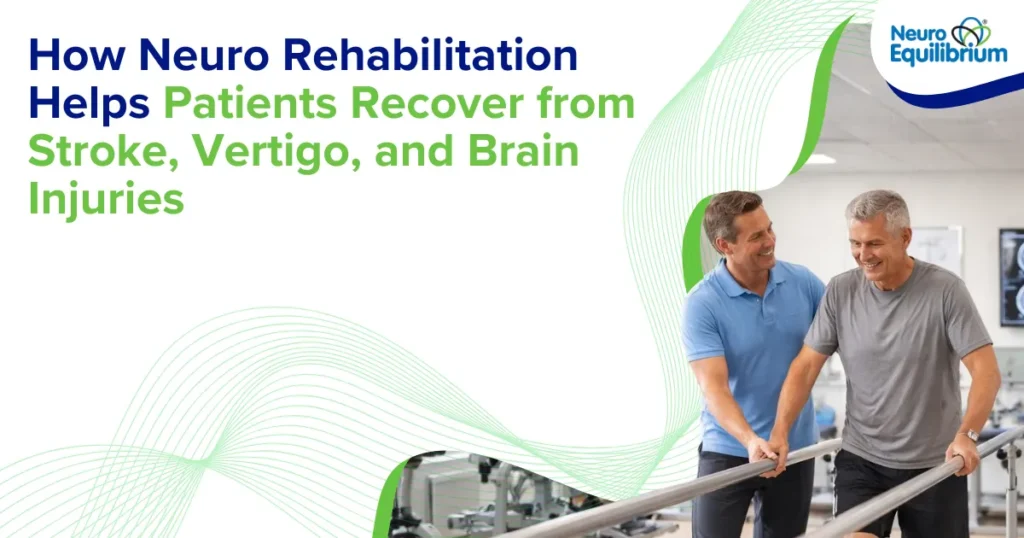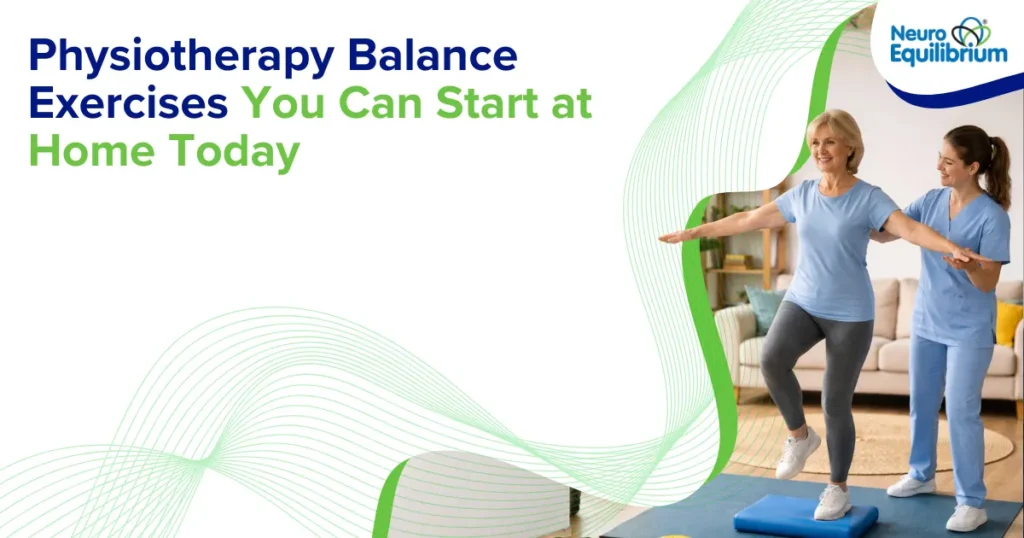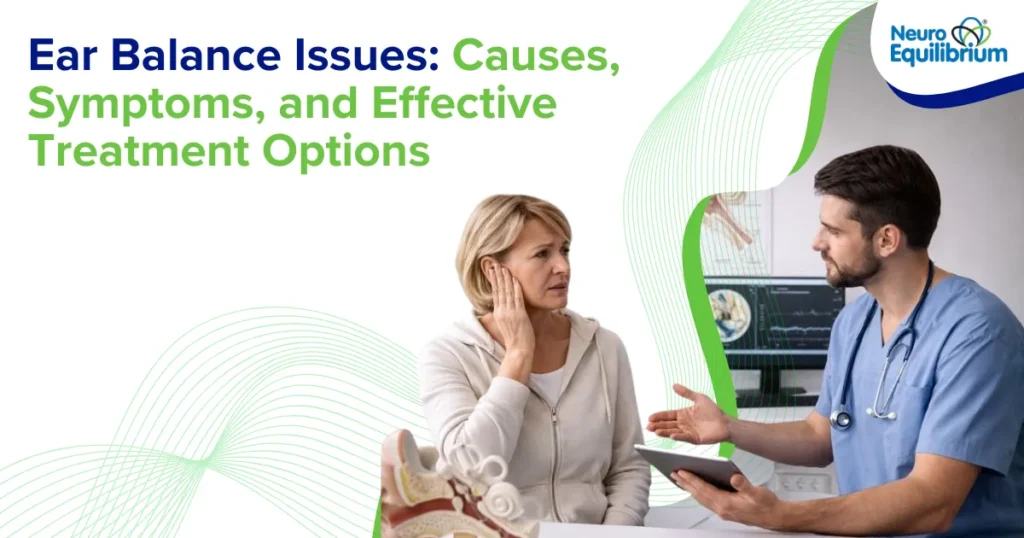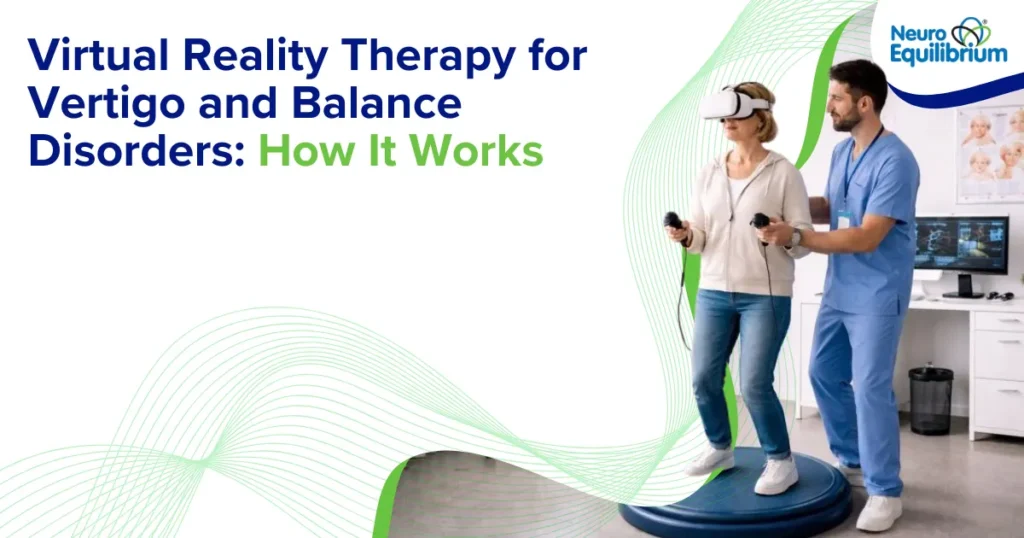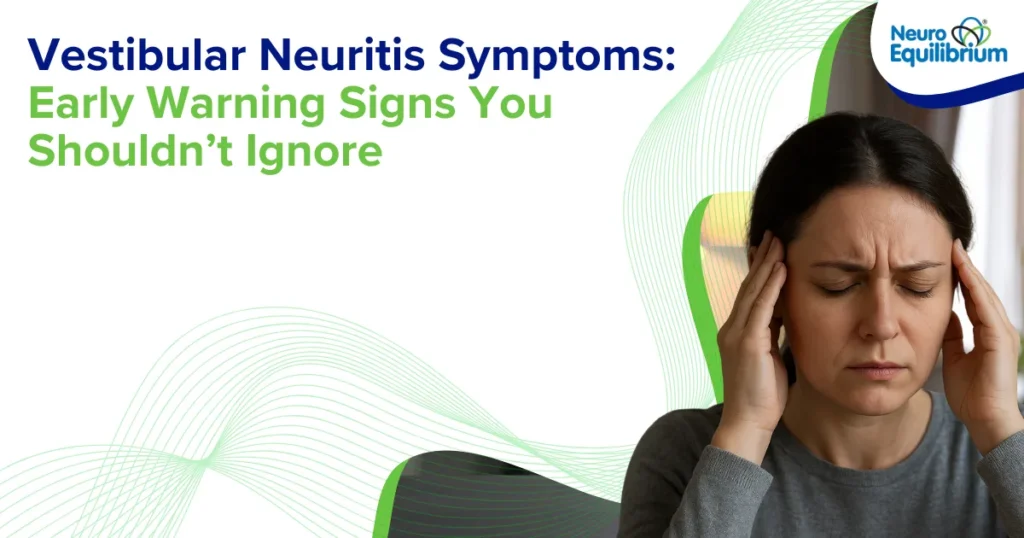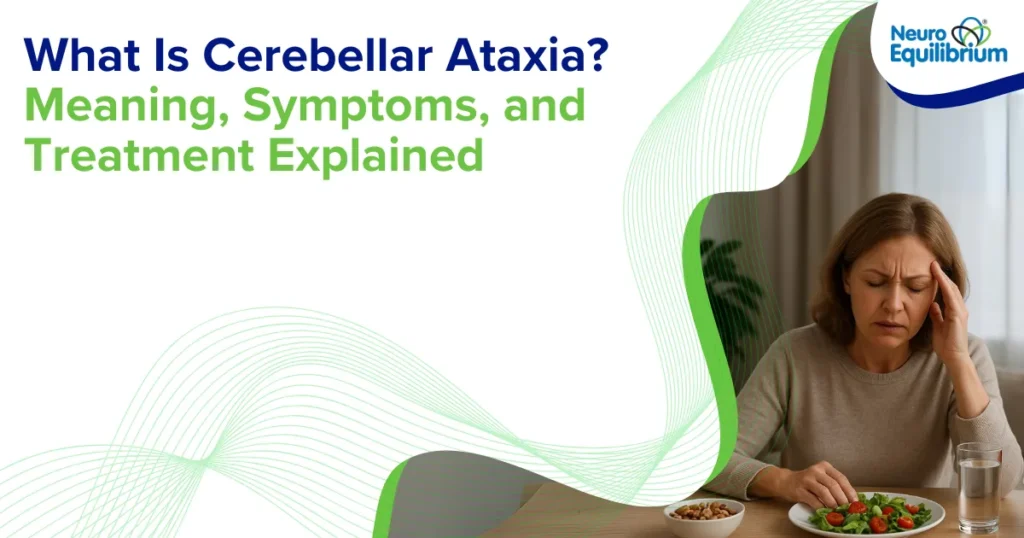Many people are surprised to learn that the ear’s primary function is not hearing but maintaining balance. The vestibular system in the inner ear serves as a gyroscope and accelerometer, detecting the head’s position and movement as well as the body’s position. It then sends this information to the brain, coordinating with different body parts to maintain balance.
When issues arise in the balance system, a person may experience spinning sensations or unsteadiness, known as vertigo. Patients often refer to it as “chakkar.” Vertigo and dizziness are typically viewed as disorders affecting older adults, but they can also occur in children. Vestibular disorders are seen in around 6% of children between the ages of 3 to 17 years. Children with hearing loss often have associated vestibular dysfunction as well.
Children with vertigo may go undiagnosed because they often are unable to describe their problems clearly. Parents may mistake the complaints as avoidance behavior or an excuse to miss school. These children require patient hearing and support to communicate what they are feeling.
Know More About Vertigo
- What is Vertigo? Causes, Symptoms, & Treatment
- Beware of Falls: The Importance of Fall Prevention in Elderly
- Top 3 Essential Vertigo Tests: How to Identify and Manage Balance Disorders
Why does vertigo occur in children?
Vertigo in children can occur for many reasons. Various diseases of the inner ear or the brain can cause an imbalance. Infections of the ear can lead to acute vertigo with vomiting, accompanied by pain in the ear and high fever. These children may have a swollen, congested eardrum, which needs to be treated with antibiotics.
A form of migraine called vestibular migraine is one of the most common causes of vertigo in children. These kids present with repeated episodes of spinning, usually lasting for a short duration. Younger children may feel scared when these episodes occur and try to cling to someone. After a few minutes, they are better and ready to play again as if nothing happened. They often suffer from motion sickness as well. Children with vestibular migraine often have a family history of headaches or vertigo. These children respond well to lifestyle modifications like regular eating and sleeping schedules. The pandemic has dramatically increased children’s screen time. These children must reduce their exposure to screens, including mobile phones and TV. They also should avoid playing games on the screen.
Another cause of vertigo in children could be BPPV, in which calcium carbonate crystals from the inner ear get dislodged from their correct place. This is usually seen after injuries. Diagnosis is made by a test called videonystagmography or VNG. Infrared cameras are used to detect the movement of eyes which indicates the position of the dislodged crystals in the inner ear. There are 14 sub-types of BPPV according to the position of the crystal within the inner ear. Once the position is detected, repositioning maneuvers like the Epley’s or Zuma maneuvers are performed to bring the crystals back to their correct position.
Other rarer causes of vertigo in children include epilepsy, Meniere’s disease (where the pressure of the inner ear increases), enlarged vestibular aqueduct (a congenital developmental disorder presenting with increasing hearing loss and falls), and behavioral disorders.
How Risk Factors Contribute to Vertigo in Children
Understanding how these risk factors contribute to vertigo can help in better management and prevention. Here’s a breakdown of each factor and its role in vertigo development:
1.Middle Ear Infections (Otitis Media)
- When fluid builds up in the middle ear, it can mess with balance and cause dizziness.
- Kids who get frequent colds, have allergies, or have problems with their eustachian tubes (which help drain fluid from the ear) are more likely to get ear infections.
2. Migraine and Vestibular Migraine
- Kids who get migraines or have a family history of migraines might also feel dizzy during a migraine attack.
- Things like stress, certain foods (like chocolate and cheese), skipping meals, and not getting enough sleep can make it worse.
3. Inner Ear Malformations or Congenital Issues
- Congenital malformations of the inner ear (e.g., vestibular aqueduct enlargement) can disrupt normal balance mechanisms.
4. Head Trauma
- Falls, sports injuries, or hitting the head can damage the part of the ear that controls balance, leading to dizziness.
- Playing contact sports without the right protective gear or doing risky activities without supervision can increase the chances of this happening
5. Medication Side Effects
- Certain medicines can be ototoxic, potentially affecting the inner ear structures responsible for balance.
6. Dehydration and Nutritional Factors
- Not drinking enough water or having an imbalance of important minerals (electrolytes) can make kids feel dizzy.
- This is especially common in hot weather or if they drink too many sugary or caffeinated drinks instead of water.
7. Orthostatic Hypotension or Blood Pressure Fluctuations
- Standing up too quickly can sometimes cause blood pressure to drop suddenly, making kids feel dizzy for a short time.
8. Viral or Bacterial Infections Affecting the Inner Ear
- Some viral or bacterial infections, like labyrinthitis or vestibular neuritis, can cause inflammation in the inner ear, leading to sudden dizziness.
- These often happen after a cold or if the immune system is weak.
9. Stress and Anxiety
- When kids feel really stressed or anxious, they might feel lightheaded or dizzy.
- School pressure, social problems, or not knowing how to handle stress properly can make it worse.
10. Genetic Factors
- If someone in the family has balance problems or migraines, kids might be more likely to have similar issues.
How is Vertigo in Children Diagnosed?
Children need a patient and friendly ear to express their feelings. They must sense that we believe what they say. Making them feel as though they are too young to understand their feelings or merely seeking attention often discourages them from sharing their symptoms, which can delay diagnosis and treatment. After gathering a detailed history, specialized diagnostic tests are necessary to determine the exact cause of vertigo in children. Various neurological tests like Videonystagmography (VNG), Computerized dynamic visual acuity (DVA), Craniocorpography (CCG), Subjective visual vertical (SVV), and Audiometry are used in diagnosis.
Can Vertigo in Children Be Treated?
Vertigo is treatable once the underlying cause is detected. Technological advancements have increased the effectiveness of the treatment outcome by providing an accurate diagnosis. Depending on the diagnosis, the type of medical treatment or Vestibular rehabilitation is decided.
A parent must look out for specific symptoms in a child, such as repeated episodes of falling, difficulty focusing, or vomiting. Vertigo can also appear when a child tries to avoid certain activities or doesn’t want to play. Younger children may get very scared when the episodes occur, resulting in phobias as well. These children must be evaluated immediately to ensure a rapid return to normal activities.
Where to Seek Help for Vertigo in Children: NeuroEquilibrium
When it comes to diagnosing and treating vertigo in children, NeuroEquilibrium Centers are at the forefront of innovation and care. As the world’s largest and most advanced chain of Vertigo and Balance Disorders clinics, NeuroEquilibrium offers cutting-edge diagnostic tools and personalized treatment plans for children struggling with balance issues. With over 200 centers across India, they utilize advanced technologies like Videonystagmography (VNG), Craniocorpography (CCG), and Audiometry to identify the root causes of vertigo.
NeuroEquilibrium specializes in treating conditions like vestibular migraines, BPPV, and other balance disorders through tailored rehabilitation programs. Their comprehensive patient monitoring system ensures accurate diagnosis and effective management of vertigo, dizziness, and balance-related problems. By combining expertise with state-of-the-art technology, NeuroEquilibrium provides children with the care they need to regain their balance and lead active, fear-free lives.
Conclusion
Diagnosing vertigo and balance problems in kids can be tricky because they struggle to explain what they’re feeling. These issues are more common than people think since they can be caused by things like infections, migraines, or problems with the inner ear. Catching vertigo early and treating it properly helps kids get back to their normal routines without stress or discomfort. Certain risk factors, like migraines or developmental delays, can make vertigo more likely, so parents and caregivers should watch for warning signs. At NeuroEquilibrium, we use advanced tests and treatments to help kids manage vertigo, so they can stay active and healthy.
FAQs on Vertigo in Children
What are the common causes of vertigo in children?
The causes of vertigo in children include inner ear infections together with vestibular migraines, Benign Paroxysmal Positional Vertigo (BPPV), and epilepsy, as well as conditions like Meniere’s disease. These factors, including hearing impairments and developmental delays, together with stress, can help trigger vertigo.
Book a consultation at your nearest NeuroEquilibrium Clinic today.
How can parents identify vertigo in their children?
Parents should look for symptoms like repeated falling, dizziness, vomiting, difficulty focusing, or avoidance of certain activities. Younger children may appear scared or clingy during episodes and struggle to describe their symptoms.
Book a consultation at your nearest NeuroEquilibrium Clinic today.
Can vertigo in children be effectively treated?
Yes, once the underlying cause is diagnosed, vertigo in children is treatable. Treatment may involve medication, vestibular rehabilitation, lifestyle changes, or maneuvers like Epley’s maneuver for BPPV.
Book a consultation at your nearest NeuroEquilibrium Clinic today.
How is vertigo in children diagnosed?
Yes, once the underlying cause is diagnosed, vertigo in children is treatable. Treatment may involve medication, vestibular rehabilitation, lifestyle changes, or maneuvers like Epley’s maneuver for BPPV.
Book a consultation at your nearest NeuroEquilibrium Clinic today.
Can vertigo in children be prevented?
While not all cases can be prevented, managing risk factors such as reducing screen time, ensuring proper sleep schedules, addressing stress, and treating ear infections promptly can help minimize the likelihood of vertigo episodes.
Book a consultation at your nearest NeuroEquilibrium Clinic today.






